Content for TS 23.304 Word version: 19.0.0
1…
4…
4.2.3…
4.2.7…
4.3…
5…
5.1.4…
5.1.5…
5.2…
5.3…
5.4…
5.5…
5.6…
5.7
5.8…
5.9…
6…
6.1.2…
6.2…
6.3…
6.3.2…
6.3.2.3…
6.3.2.4…
6.4…
6.4.3…
6.5…
6.5.2…
6.6…
6.7…
6.7.2…
6.8…
7…
7.2…
6.7.2 5G ProSe Communication via 5G ProSe Layer-2 UE-to-UE Relay
6.7.3 5G ProSe UE-to-UE Relay Communication with integrated Discovery
6.7.3.1 General
6.7.3.2 Procedure for Communication via Layer-3 UE-to-UE Relay
6.7.3.3 Procedure for Communication via Layer-2 UE-to-UE Relay
6.7.4 5G ProSe UE-to-UE Relay reselection
6.7.4.1 General
6.7.4.2 Negotiated 5G ProSe Layer-2 UE-to-UE Relay reselection
6.7.4.3 Negotiated 5G ProSe Layer-3 UE-to-UE Relay reselection
...
...
6.7.2 5G ProSe Communication via 5G ProSe Layer-2 UE-to-UE Relay p. 129
This procedure applies to 5G ProSe Layer-2 UE-to-UE Relay.
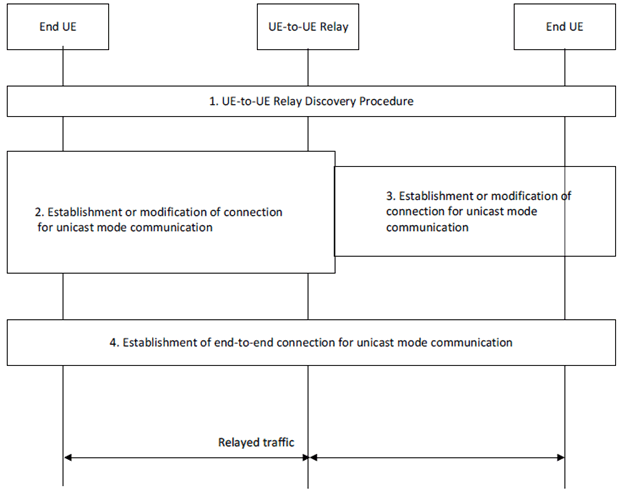
Figure 6.7.2-1: 5G ProSe Communication via 5G ProSe Layer-2 UE-to-UE Relay
(⇒ copy of original 3GPP image)
(⇒ copy of original 3GPP image)
Service authorization and provisioning has been performed for the 5G ProSe Layer-2 UE-to-UE Relay and the 5G ProSe End UEs as described in clause 6.2 before this procedure.
Step 1.
Model A or Model B 5G ProSe UE-to-UE Relay Discovery as described in clause 6.3.2.4 is performed and a source 5G ProSe End UE selects a suitable 5G ProSe Layer-2 UE-to-UE Relay for the communication with a target 5G ProSe End UE.
Step 2.
The source 5G ProSe End UE decides whether to use an existing PC5 link with the 5G ProSe UE-to-UE Relay for the required service. If an existing PC5 link is used then the Layer-2 link modification procedure as specified in clause 6.4.3.7 is used towards a 5G ProSe UE-to-UE Relay, otherwise a Layer-2 link establishment procedure is used towards a 5G ProSe UE-to-UE Relay.
This procedure is towards the selected 5G ProSe UE-to-UE Relay and for Layer-2 link establishment, the security establishment is performed before step 3 is initiated.
Step 3.
The 5G ProSe Layer-2 UE-to-UE Relay decides whether to use an existing PC5 link between the 5G ProSe UE-to-UE Relay and the target 5G ProSe End UE for the required service and initiates Layer-2 link establishment procedure or Layer-2 link modification procedure as specified in clause 6.4.3.7 with the target 5G ProSe End UE.
If the Layer-2 link establishment procedure is performed towards the target 5G ProSe End UE then either a broadcast or a unicast Layer-2 ID is used as the Destination Layer-2 ID. A Unicast Layer-2 ID is used if the Layer-2 ID of the target 5G ProSe Layer-2 End UE associated with the user info (i.e. Application Layer ID) of target 5G ProSe Layer-2 End UE is known to the 5G ProSe Layer-2 UE-to-UE Relay.
If the Layer-2 link modification procedure is performed towards the target 5G ProSe End UE, it uses the unicast Layer-2 ID of target 5G ProSe End UE as the Destination Layer-2 ID.
The 5G ProSe Layer-2 UE-to-UE Relay sends a Direct Communication Accept message or Link Modification Accept message to the source 5G ProSe End UE after step 3 is completed.
Step 4.
The source 5G ProSe End UE establishes an end-to-end connection for unicast mode communication with the target 5G ProSe End UE as described in clause 6.4.3.7.
The data and End-to-End PC5-S signalling are transferred between the source 5G ProSe End UE and the target 5G ProSe End UE via the 5G ProSe Layer-2 UE-to-UE Relay. The 5G ProSe Layer-2 UE-to-UE Relay forwards all the data traffic and End-to-End PC5-S signalling between the source 5G ProSe End UE and the target 5G ProSe End UE, as specified in TS 38.300.
6.7.3 5G ProSe UE-to-UE Relay Communication with integrated Discovery p. 131
6.7.3.1 General p. 131
5G ProSe Communication via 5G ProSe UE-to-UE Relay with integrated Discovery is supported.
For 5G ProSe UE-to-UE Relay Communication with integrated Discovery, when a UE allows a UE-to-UE relay to be involved in the Direct Communication Request to the other UE, the UE indicates it by including a relay_indication in the broadcasted Direct Communication Request message.
When a UE-to-UE relay receives a Direct Communication Request including a relay_indication, it decides whether to forward the message according to e.g. Relay Service Code if there is any, Application ID, operator policy per Relay Service Code, signal strength and local policy.
6.7.3.2 Procedure for Communication via Layer-3 UE-to-UE Relay p. 132
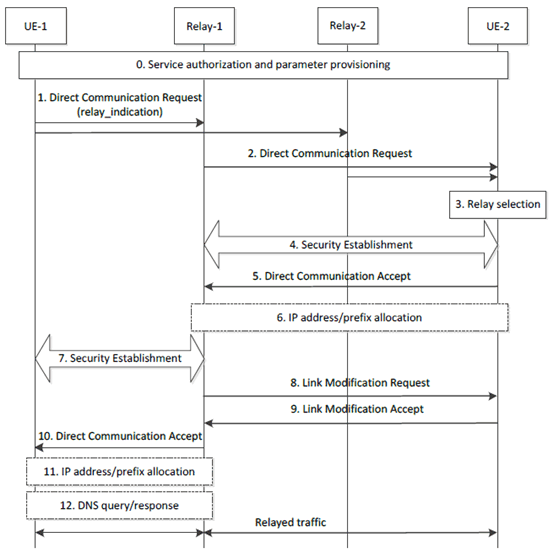
Figure 6.7.3.2-1: 5G ProSe UE-to-UE Relay Communication with integrated Discovery via Layer-3 UE-to-UE Relay
(⇒ copy of original 3GPP image)
(⇒ copy of original 3GPP image)
Step 0.
5G ProSe End UEs are authorized and provisioned with parameters to use the service provided by the 5G ProSe UE-to-UE Relays. 5G ProSe UE-to-UE Relays are authorized and provisioned with parameters to provide service of relaying traffic among 5G ProSe End UEs.
Step 1.
The source 5G ProSe End UE (i.e. UE-1) wants to establish a unicast communication with the target 5G ProSe End UE (i.e. UE-2) and broadcasts a Direct Communication Request. The parameters included in the Direct Communication Request message are described in clause 6.4.3.7.
The relay_indication in the Direct Communication Request is used to indicate whether 5G ProSe UE-to-UE Relay can forward the Direct Communication Request message or not. It is also used to limit the number of hops of 5G ProSe UE-to-UE Relay by removing relay_indication in the Direct Communication Request message from the 5G ProSe UE-to-UE Relay.
The Source Layer-2 ID and Destination Layer-2 ID used for the Direct Communication Request message are defined in clause 5.8.5.
The source 5G ProSe End UE gets application information and optional ProSe Application Requirements from ProSe application layer, and determines the end-to-end QoS parameters as described in clause 5.6.3.1.
Step 2.
When receiving Direct Communication Request with relay_indication from UE-1, the 5G ProSe UE-to-UE Relay (i.e. Relay-1 and Relay-2) may decide to participate in the procedure and broadcast a Direct Communication Request message in its proximity without relay_indication. The parameters included in the Direct Communication Request message are described in clause 6.4.3.7.
The Source Layer-2 ID and Destination Layer-2 ID used for the Direct Communication Request message are defined in clause 5.8.5.
Step 3.
When UE-2 receives a Direct Communication Request from one or multiple 5G ProSe UE-to-UE Relays, UE-2 select a 5G ProSe UE-to-UE Relay which UE-2 will respond. UE-2 may select the 5G ProSe UE-to-UE Relay according to e.g. the signal strength, local policy, operator policy per Relay Service Code if any.
Step 4.
The security establishment happens between UE-2 and the selected 5G ProSe UE-to-UE Relay (here Relay-1), if needed.
If the existing PC5 link can be reused, Link Modification Request and Link Modification Accept messages are used.
Step 5.
UE-2 replies Direct Communication Accept message to Relay-1. The parameters included in the Direct Communication Accept message are described in clause 6.4.3.7.
Step 6.
For IP traffic, IPv6 prefix or IPv4 address is allocated for the target 5G ProSe Layer-3 End UE as defined in clause 5.5.1.4.
Step 7.
Security establishment happens between UE-1 and Relay-1, if needed.
Step 8.
For 5G ProSe UE-to-UE Relay Communication with integrated Discovery, after receiving QoS Info of the end-to-end QoS from UE-1, Relay-1 provides the QoS info of the second hop QoS to UE-2 with Link Modification Request message.
Step 9.
For 5G ProSe UE-to-UE Relay Communication with integrated Discovery, UE-2 responds with a Link Modification Accept message.
Step 10.
Relay-1 responds with Direct Communication Accept to the UE-1. The parameters included in the Direct Communication Accept message are described in clause 6.4.3.7.
Step 11.
For IP traffic, IPv6 prefix or IPv4 address is allocated for the source 5G ProSe Layer-3 End UE as defined in clause 5.5.1.4.
Step 12.
For IP communication, the 5G ProSe Layer-3 UE-to-UE Relay may store an association of user info (i.e. Application Layer ID) and the IP address of target 5G ProSe Layer-3 End UE into its DNS entries and the 5G ProSe Layer-3 UE-to-UE Relay may act as a DNS server to other UEs. The source 5G ProSe Layer-3 End UE may send a DNS query to the 5G ProSe Layer-3 UE-to-UE Relay to request IP address of target 5G ProSe Layer-3 End UE after step 11 if the IP address of target 5G ProSe Layer-3 End UE is not received in step 10 and the 5G ProSe Layer-3 UE-to-UE Relay returns the IP address of the target 5G ProSe Layer-3 End UE to the source 5G ProSe Layer-3 End UE.
For Ethernet communication, the 5G ProSe Layer-3 UE-to-UE Relay is acting as an Ethernet switch by maintaining the association between PC5 links and Ethernet MAC addresses received from the 5G ProSe Layer-3 End UE.
For Unstructured traffic communication, for each pair of source and target 5G ProSe Layer-3 End UEs, the 5G ProSe Layer-3 UE-to-UE Relay maintains the 1:1 mapping between the PC5 link with source 5G ProSe Layer-3 End UE and the PC5 link with target 5G ProSe Layer-3 End UE.
The source 5G ProSe Layer-3 End UE communicates with the target 5G ProSe Layer-3 End UE via the 5G ProSe Layer-3 UE-to-UE Relay.
6.7.3.3 Procedure for Communication via Layer-2 UE-to-UE Relay p. 134
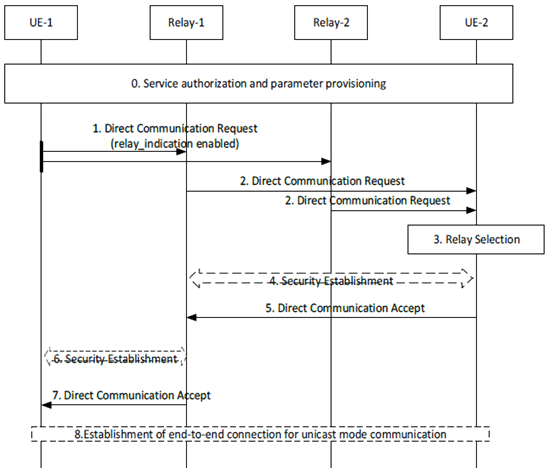
Figure 6.7.3.3-1: 5G ProSe UE-to-UE Relay Communication with integrated Discovery via Layer-2 UE-to-UE Relay
(⇒ copy of original 3GPP image)
(⇒ copy of original 3GPP image)
Step 0-5.
The parameters included in the above messages are described in clause 6.4.3.7.4.
It is the same as steps 0-5 of Figure 6.7.3.2-1.
Step 6.
It is the same as step 7 of Figure 6.7.3.2-1.
Step 7.
It is the same as step 10 of Figure 6.7.3.2-1.
Step 8.
For 5G ProSe UE-to-UE Relay Communication via Layer-2 UE-to-UE Relay, UE-1 establishes an end-to-end connection for unicast mode communication with UE-2.
6.7.4 5G ProSe UE-to-UE Relay reselection p. 134
6.7.4.1 General p. 134
After being connected to the 5G ProSe UE-to-UE Relay, the 5G ProSe End UEs may trigger the 5G ProSe UE-to-UE Relay reselection based on conditions (e.g. the measured signal strength of PC5 unicast link with the 5G ProSe UE-to-UE Relay) as specified in TS 38.300.
For 5G ProSe UE-to-UE Relay reselection, a 5G ProSe UE-to-UE Relay may be discovered by either the discovery procedures defined in clause 6.3.2.4 or by the negotiated 5G ProSe UE-to-UE Relay reselection procedure defined in clause 6.7.4.2 or clause 6.7.4.3.
In the negotiated UE-to-UE Relay reselection defined in clause 6.7.4.2 or clause 6.7.4.3, one 5G ProSe End UE initiates the UE-to-UE Relay reselection procedure, the 5G ProSe End UEs can negotiate a new 5G ProSe UE-to-UE Relay using the existing connection and to establish the communication via the reselected 5G ProSe UE-to-UE Relay prior to releasing the communication via the current 5G ProSe UE-to-UE Relay.
6.7.4.2 Negotiated 5G ProSe Layer-2 UE-to-UE Relay reselection p. 135
Depicted in Figure 6.7.4.2-1 is the procedure for the negotiated 5G ProSe Layer-2 UE-to-UE Relay reselection.
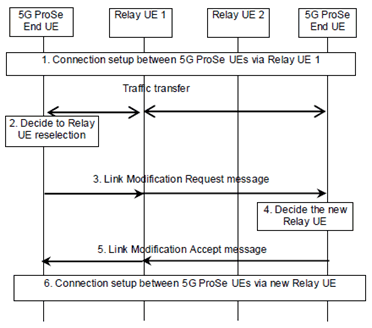
Figure 6.7.4.2-1: Negotiated 5G ProSe Layer-2 UE-to-UE Relay reselection
(⇒ copy of original 3GPP image)
(⇒ copy of original 3GPP image)
Step 1.
A PC5 unicast link is established between the 5G ProSe End UEs via a 5G ProSe UE-to-UE Relay, based on the procedure defined in clause 6.7.2.
Step 2.
The initiating 5G ProSe End UE determines, e.g. based on PC5 signal strength, to perform UE-to-UE Relay reselection and obtains a list of candidate UE-to-UE Relays per RSC. The initiating 5G ProSe End UE may receive UE-to-UE Relay Discovery Announcement messages from 5G ProSe UE-to-UE Relays or initiate the 5G ProSe UE-to-UE Relay discovery procedures to find the candidate 5G ProSe UE-to-UE Relays. The initiating 5G ProSe End UE determines the candidate 5G ProSe UE-to-UE Relays e.g., based on the PC5 signal strength of the received UE-to-UE Relay Discovery Announcement message, RSC within the UE-to-UE Relay Discovery Announcement message. The candidate 5G ProSe UE-to-UE Relays support the same RSC which is associated with the PC5 unicast link between the initiating 5G ProSe End UE and the 5G ProSe UE-to-UE Relay.
Step 3.
The initiating 5G ProSe End UE sends a Link Modification Request message to the responding 5G ProSe End UE which includes a Relay re-selection indication, the User Info ID(s) of the candidate 5G ProSe UE-to-UE Relay(s) and optionally the Layer-2 ID(s) of the candidate 5G ProSe UE-to-UE Relay(s) and security information.
Step 4.
The responding 5G ProSe End UE selects a new 5G ProSe UE-to-UE Relay from the candidate 5G ProSe UE-to-UE Relays per RSC, based on the Relay re-selection indication in the Link Modification Request message. If the responding 5G ProSe End UE has not received a UE-to-UE Relay Discovery Announcement message from a candidate 5G ProSe UE-to-UE Relay (e.g. during a previous 5G ProSe UE-to-UE Relay Discovery procedure) or does not have a PC5 connection with the candidate 5G ProSe UE-to-UE Relay associated with the same RSC, then the responding 5G ProSe End UE may perform the Candidate 5G ProSe UE-to-UE Relay Discovery procedure defined in clause 6.3.2.4.4. The responding 5G ProSe End UE sets the candidate relay User Info ID to that of a candidate 5G ProSe UE-to-UE Relay in the discovery message and may set the Layer-2 ID of the candidate 5G ProSe UE-to-UE Relay, if received at step 3, as the Destination Layer-2 ID to carry the discovery message. The PC5 signal strength of the UE-to-UE Relay Discovery Announcement message or UE-to-UE Relay Discovery Response message may be used to select the new 5G ProSe UE-to-UE Relay.
Step 5.
The responding 5G ProSe End UE sends a Link Modification Accept message to the initating 5G ProSe End UE, including the User Info ID of the new 5G ProSe UE-to-UE Relay and security information.
Step 6.
5G ProSe End UEs set up PC5 unicast links, if not already set up, with the new 5G ProSe UE-to-UE Relay, by reusing the procedure defined in clause 6.7.2 and the PC5 unicast is link established between 5G ProSe End UEs via the new 5G ProSe UE-to-UE Relay. The 5G ProSe End UEs switch the data traffic via the new 5G ProSe UE-to-UE Relay. The security information is used to verify that the new link has been set up successfully.
6.7.4.3 Negotiated 5G ProSe Layer-3 UE-to-UE Relay reselection p. 136
Depicted in Figure 6.7.4.3-1 is the procedure for the negotiated 5G ProSe Layer-3 UE-to-UE Relay reselection.
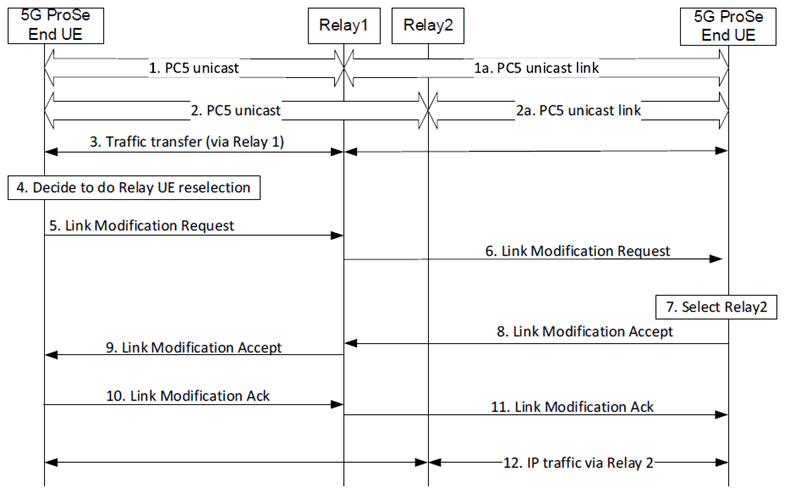
Figure 6.7.4.3-1: Negotiated 5G ProSe Layer-3 UE-to-UE Relay reselection
(⇒ copy of original 3GPP image)
(⇒ copy of original 3GPP image)
Step 1.
5G ProSe End UEs have set up PC5 unicast links with a 5G ProSe UE-to-UE Relay, based on the procedure defined in clause 6.7.1.
Step 2.
The 5G ProSe End UEs have additionally set up PC5 unicast links with a 5G ProSe UE-to-UE Relay, based on the procedure defined in clause 6.7.1.
Step 3.
The 5G ProSe End UEs are transferring traffic via the 5G ProSe UE-to-UE Relay.
Step 4.
The initiating 5G ProSe End UE determines, e.g. based on PC5 signal strength, to perform UE-to-UE Relay reselection and obtains a list of candidate UE-to-UE Relays per RSC. The initiating 5G ProSe End UE may receive UE-to-UE Relay Discovery Announcement messages from 5G ProSe UE-to-UE Relays or initiate the 5G ProSe UE-to-UE Relay discovery procedures to find the candidate 5G ProSe UE-to-UE Relays. The initiating 5G ProSe End UE determines the candidate 5G ProSe UE-to-UE Relays e.g., based on the PC5 signal strength of the received UE-to-UE Relay Discovery Announcement message, RSC within the UE-to-UE Relay Discovery Announcement message. The candidate 5G ProSe UE-to-UE Relays support the same RSC which is associated with the PC5 unicast link between the initiating 5G ProSe End UE and the 5G ProSe UE-to-UE Relay.
Step 5.
The initiating 5G ProSe End UE sends a Link Modification Request message to the responding 5G ProSe UE-to-UE Relay, which includes a Relay re-selection indication, the User Info ID(s) of the candidate 5G ProSe UE-to-UE Relay(s), the IP addresses of the responding 5G ProSe End UEs and optionally the Layer-2 ID(s) of the candidate 5G ProSe UE-to-UE Relay(s).
Multiple 5G ProSe End UEs IP addresses may be included when the initiating 5G ProSe End UE is communicating with multiple 5G ProSe End UEs via the 5G ProSe UE-to-UE Relay.
Step 6.
5G ProSe UE-to-UE Relay determines the responding 5G ProSe End UE based on the IP address received from the initiating 5G ProSe End UE and sends a Link Modification Request message to the responding 5G ProSe End UE. The Link Modification Request message includes a Relay re-selection indication, User Info ID(s) of the candidate 5G ProSe UE-to-UE Relay(s), IP address of the initiating 5G ProSe End UE and optionally the Layer-2 ID(s) of the candidate 5G ProSe UE-to-UE Relay(s).
If multiple 5G ProSe End UEs are specified in the Link Modification Request message received from the initiating 5G ProSe End UE, the 5G ProSe UE-to-UE Relay sends a PC5 Link Modification Request to each of the 5G ProSe End UEs.
Step 7.
The responding 5G ProSe End UE selects a new 5G ProSe UE-to-UE Relay from the candidate 5G ProSe UE-to-UE Relays per RSC, based on the Relay re-selection indication in the Link Modification Request message. If the responding 5G ProSe End UE has not received a UE-to-UE Relay Discovery Announcement message from a candidate 5G ProSe UE-to-UE Relay (e.g. during a previous 5G ProSe UE-to-UE Relay Discovery procedure) or does not have a PC5 connection with the candidate 5G ProSe UE-to-UE Relay associated with the same RSC, then the responding 5G ProSe End UE may perform the Candidate 5G ProSe UE-to-UE Relay Discovery procedure defined in clause 6.3.2.4.4. The responding 5G ProSe End UE sets the candidate relay User Info ID to that of a candidate 5G ProSe UE-to-UE Relay in the discovery message and may set the Layer-2 ID of the candidate 5G ProSe UE-to-UE Relay, if received at step 6, as the Destination Layer-2 ID to carry the discovery message. The responding 5G ProSe End UE may initiate the procedure to set up PC5 unicast links with the new 5G ProSe UE-to-UE Relay, by reusing the procedure defined in clause 6.7.1. The PC5 signal strength of the UE-to-UE Relay Discovery Announcement message or UE-to-UE Relay Discovery Response message may be used to select the new 5G ProSe UE-to-UE Relay.
Step 8.
The responding 5G ProSe End UE sends a Link Modification Accept message to the 5G ProSe UE-to-UE Relay, including the User Info ID of the new 5G ProSe UE-to-UE Relay, IP address of the initiating 5G ProSe End UE, IP address of the responding 5G ProSe End UE for communication via the newly selected 5G ProSe UE-to-UE Relay and Relay re-selection indication.
Step 9.
5G ProSe UE-to-UE Relay sends a Link Modification Accept message to the initating 5G ProSe End UE, including the User Info ID of the new 5G ProSe UE-to-UE Relay, IP address of the responding 5G ProSe End UE, IP address of the responding 5G ProSe End UE for communication via the newly selected 5G ProSe UE-to-UE Relay and Relay re-selection indication.
Step 10-11.
Link Modification Ack is sent from the initating 5G ProSe End UE to the responding the 5G ProSe End UE via the 5G ProSE UE-to-UE Relay, including the IP address of the initiating 5G ProSe End UE for communication via the newly selected 5G ProSe UE-to-UE Relay, the IP address of the responding 5G ProSe End UE and Relay re-selection indication.
Step 12.
The 5G ProSe End UEs transfer traffic via the newly selected 5G ProSe UE-to-UE Relay.